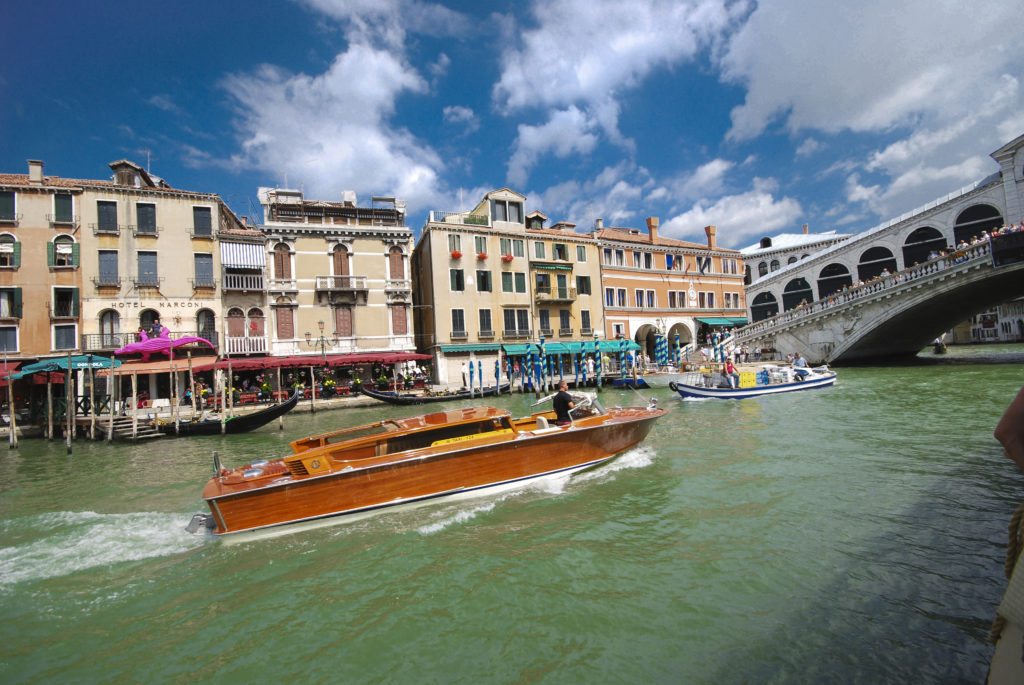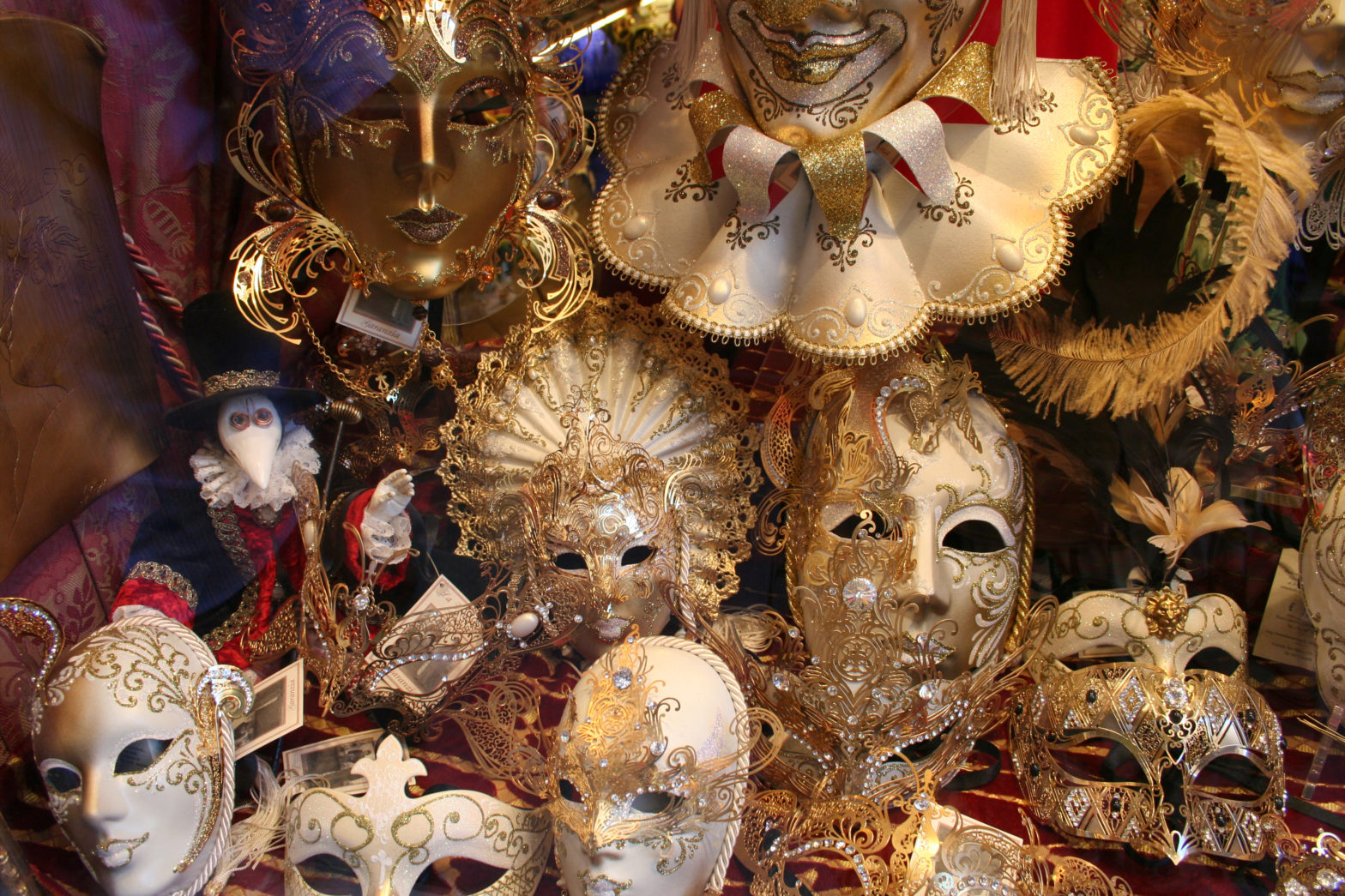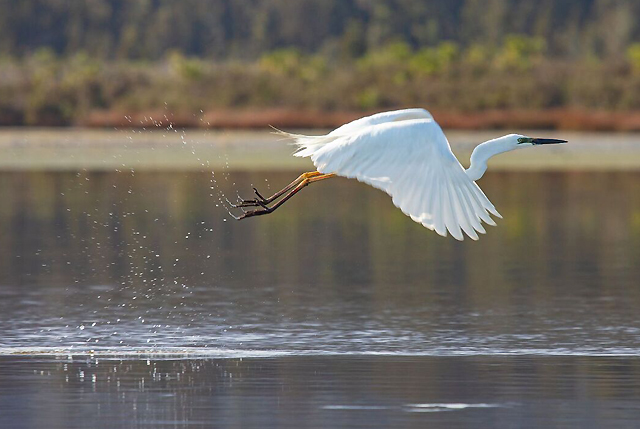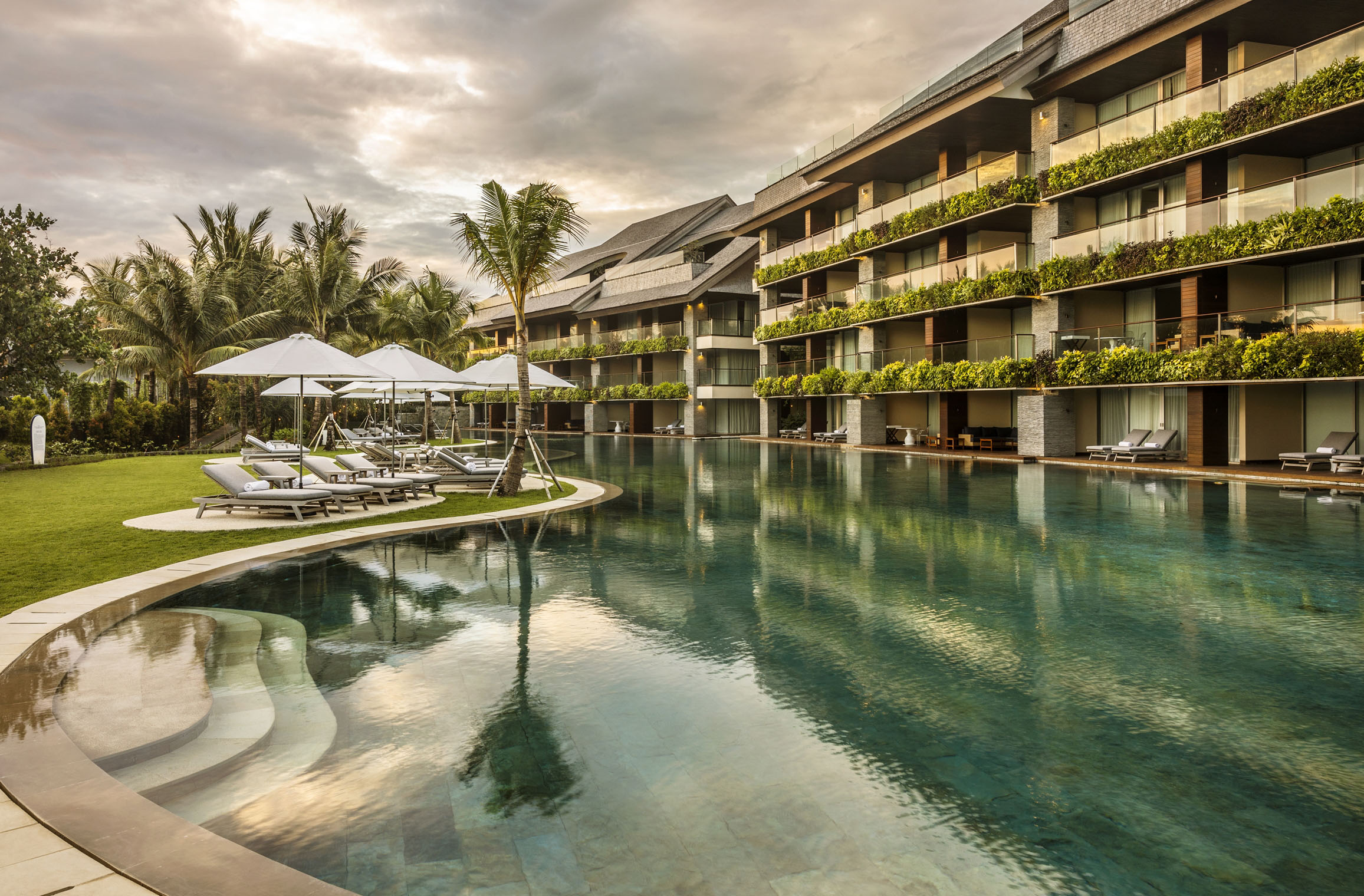Crumbling, flood-prone, crowded and expensive, Venice still manages to be the world’s most beautiful and romantic city. Fleur Kinson muses on the capital of paradoxes.
Coming in to land, my plane window frames views of a sodden, mist-grey landscape that fragments into the Adriatic Sea. It’s a world half of land and half of water, the boundaries between the two continually blurred and broken. Sinking lower through the winter sky, wheels clunking out from their sockets in readiness, the lagoon around Venice becomes distinct. You can trace the sinuous lines of its underwater channels and shallows, each a pale or dark meander through the brown seawater. These wayward wriggles are what put this extraordinary city out here in the first place.
Also read: Italy with Globus
First sights of Venice
The salty pioneers of Venice were just looking for a way to elude Attila the Hun. Waves of murderous northern tribes swept down through Italy in the fifth and sixth centuries, prompting the people who lived on solid ground near the lagoon to seek refuge wherever they could find it. The labyrinthine water-channels out in the lagoon, impossible to navigate unless you knew them intimately, proved the perfect protection – a maze of boat-snagging shallows and sand-traps. Safe out on the remote islets and mudflats that only they knew how to reach, living off fish and rainwater and seaweed, the early Venetians established their amphibious society. They drove wooden posts into the silt to create more “land,” and began fashioning “streets” out of water. From this strange and unpromising arrangement, they founded a city that would become for a thousand years the world’s greatest trading state. And later, one of its most loved tourist destinations.

Venice’s famous water taxis
From the airport, I take a water taxi to my hotel, sitting outside in the invigoratingly cold, sea-smelling air and clinging on for dear life as we bounce across the wakes of fast oncoming boats. An orange full moon hangs smudged like a broken egg yolk in the watery veils of the evening sky. We drop our speed to inch quietly through the atmospheric back alleys of the city, and I’m struck by how intensely beautiful Venice is in the winter cold – poignant, melancholy. A woman on the boat obviously shares my thoughts and asks me, without hope of a meaningful answer, “Why is Venice so… evocative?” Why, indeed. Perhaps it’s the loveliness of its decay.

The crumbling plaster, the tilting belltowers. The place is falling to bits, but beautifully. It’s a valiant triumph over time. A poke in the eye to mortality. This impossible project – a city built on water – surely was doomed to fail, yet miraculously it persists. And so it gives hope to all our wildest schemes. It hints that beauty might unexpectedly endure. I take another water taxi from the hotel to Piazza San Marco, emerging from narrow watery lanes onto the grandest, widest part of the Grand Canal. A vast cruise ship inches delicately amongst darting smaller craft. Dozens of flashbulbs wink from its boughs, happy passengers excited by their first sight of Venice. We dock expertly in the bucking waves, and I walk into the piazza – now fantastically spacious without its summer hordes. The basilica is ghostly grey and asleep, all its glinting gold put to bed for the night. A few pigeons huddle shivering, a happy contrast to their irritating ubiquity a few months ago.

A coffee in Venice
On three sides, pale arcaded buildings stand handsome and serene. It’s like catching a movie star in the middle of a nap. Such stillness! Such unexpected silence! Come here in warmer months and this piazza is a giddy whirl of crowds, cameras, and café-tables, backed by the magnificent gilded fizz of the basilica. Then, even the hot orange spike of the campanile seems to quiver with excitement to find itself standing in this peerless square, piercing the eggshell-blue sky a hundred metres above the crowds. And in that midday heat, what do people drink here?

Coffee, of course. Piazza San Marco long ago was dubbed “the drawing room of Europe” – the space where the whole continent meets and engages in genteel conversation. And talk always flows better over coffee. In the early 1600s, coffee first entered Europe through Venice – then a great trading city with a semi-monopoly on luxuries from the exotic east. Europe’s first cafés sprang up in Venice, and all the civilized delights of café culture slowly spread from here. The oldest surviving café in the city today is the Florian, tucked into a corner of Piazza San Marco. It first opened its doors in 1720, and quickly assumed the role of Venice’s informal heart of politics and art. The great, the good, the ordinary, and the notorious have all supped coffee at the Florian in their time. Casanova was wont to lady-hunt here. Lord Byron, now thought to have been anorexic, came often and probably tried to avoid the delicious pastries. Dickens spent happy hours here observing café-characters. Stravinsky listened to the tinkle-clatter of teaspoons; Proust had Madeleine cakes to dip.
Venice’s elegant and sumptuous coffee houses
It’s an elegant, comfortable place – sumptuous without being snooty. I choose a room where Oriental portraits adorn the walls and ceiling, outlined in gilt and covered in glass that reflects and redoubles the tiny lights of the chandeliers. My fellow patrons are young Venetian couples, a quiet tourist or two, and a few businesspeople winding down for the night with a decaf or an orzo (barley coffee).

I congratulate myself on finding a seat so easily. In the height of summer, this place would be chock-a-block. Venice receives an incredible twelve million visitors every year. It’s ironic that a city built with the express intention of eluding outsiders now should entice them in such abundance. The problem is that the place is just so gorgeous. For centuries, Venice spent much of its fabulous wealth on beautifying itself – building delicious palaces, erecting churches, laying out mosaics, carving statues, slapping on the gold. When its wealth and power began declining slowly from the 1500s onwards, Venice steadily acquired a new reputation as a place of fun and frivolity, of casinos and carnival. (For a long time, the hedonistic city-wide “carnevale” lasted a full six months of each year.) Aristocratic young men making the Grand Tour across Europe couldn’t miss making a fun-filled stop in Venice. And so began a tradition of visiting that persists to the present day.
Venice Canals
The tourists who clutter up the city (and drive its prices sky-high) generally are regarded as an irritant by other tourists. It’s often said that Venice is “ruined by tourists.” But in fact, the city is saved by them. Not only do tourists sustain the Venetian economy, they preserve the physical existence of the place. Without its immeasurable worth to visitors, Venice long ago would have slipped irretrievably into the mud of the lagoon. Why go to all the trouble and expense of propping the place up if there weren’t a fortune to be made from it? So the modern-day Huns, the invading camera-toting tribes, are to be welcomed. Despite the crowds, it’s still possible to stray onto a deserted back alley here, even in July. The liquid streets follow the old natural watercourses of the lagoon, making them delightfully mazy.

About 177 canals wriggle higgledy-piggledy through the city, creating a total waterside-pavement length of about 28 miles – which gives a lot of scope for wandering. More than anything, this is a sublime city for aimless roaming on foot. Anonymous alleys are as much a part of the whole Venetian experience as the countless beautiful churches and the sumptuous art-treasures inside. But you eventually will get lost. This is an absolute certainty. Enjoy it as just another part of the mystery and romance of the city. The unsettling power of Venetian streets to lure you off on strange tangents – and occasionally lead you into disaster – is something exploited beautifully in atmospheric films like Death in Venice and Don’t Look Now. But disaster is not inevitable. Keep wandering, stop for coffee, unfurl your map, and set off again.

Morning rituals in Venice
In the morning, I’m on the streets by 7:30, knocking back cappuccino at a pavement café. Early morning Venice is tatty and beautiful, its decay more apparent in the cold morning light – rubbish bins overflowing onto the streets, the canals chugging with service-boats. Rotting wooden stumps and blue-and-white-striped poles bristle from the water. I linger on a narrow landing stage and watch stout barges roaring past laden with supplies. Workmen stand on each one, sternly shepherding their cargo. They’re bringing all the day’s unglamorous goods into the city – crates of food, cases of beer, plastic items for shops. Salty, workaday Venice is starting its day. Here are the stage managers and prop assistants; here are the scene-shifters behind the mirage.

The paradoxes of Venice
Shimmering out in its lagoon, rising dream-like from the mists and heat-hazes, sometimes it’s easy to believe that Venice is nothing but a grand illusion. How can it really be what it is? Or have been all it once was? The magic of Venice lies in its paradoxes, its many contradictions. It’s falling apart, yet remains faultlessly beautiful. Its native population is dwindling to nothing, yet it remains crowded to discomfort. It’s a city but it’s not really a city – more a living museum, existing only to delight visitors. It’s a place of the past, out of time, steeped in long-dead centuries. But it’s also a byword for the very latest in contemporary art, and spends a quarter of all its time hosting the world’s largest and most famous modern art bash: The Venice Biennale (which runs for six months every two years).

In Venice, the land isn’t land and the sea forms the streets. It’s a topsy-turvy place that forever outwits you. You think you’ve grasped it, you think you know where you are, then you turn a corner and … yes, you’re lost again. Venice forever surprises, continually juxtaposing things you think couldn’t go together. If there’s one view that most seems to sum up this city’s natural ease with contradiction, perhaps it’s the vista you get looking west in the evening. Beyond the fine belltowers and ornate frontages, above the arabesque windows and delicate roof tiles, the sunset sky glows orange and apocalyptic behind the industrial majesty of the Venetian suburb Marghera, on the nearby mainland. Towering steel cranes rend the sky with harsh diagonals; storage tanks and processing plants glower over the shoreline; and rusty cargo ships drag their giant burden through the waves. Against all the odds, these austere modern shapes harmonize perfectly with the frilly historic buildings in the foreground, powerfully enhancing the beauty of the whole scene. In Venice, it seems, anything is possible.














Recent Comments